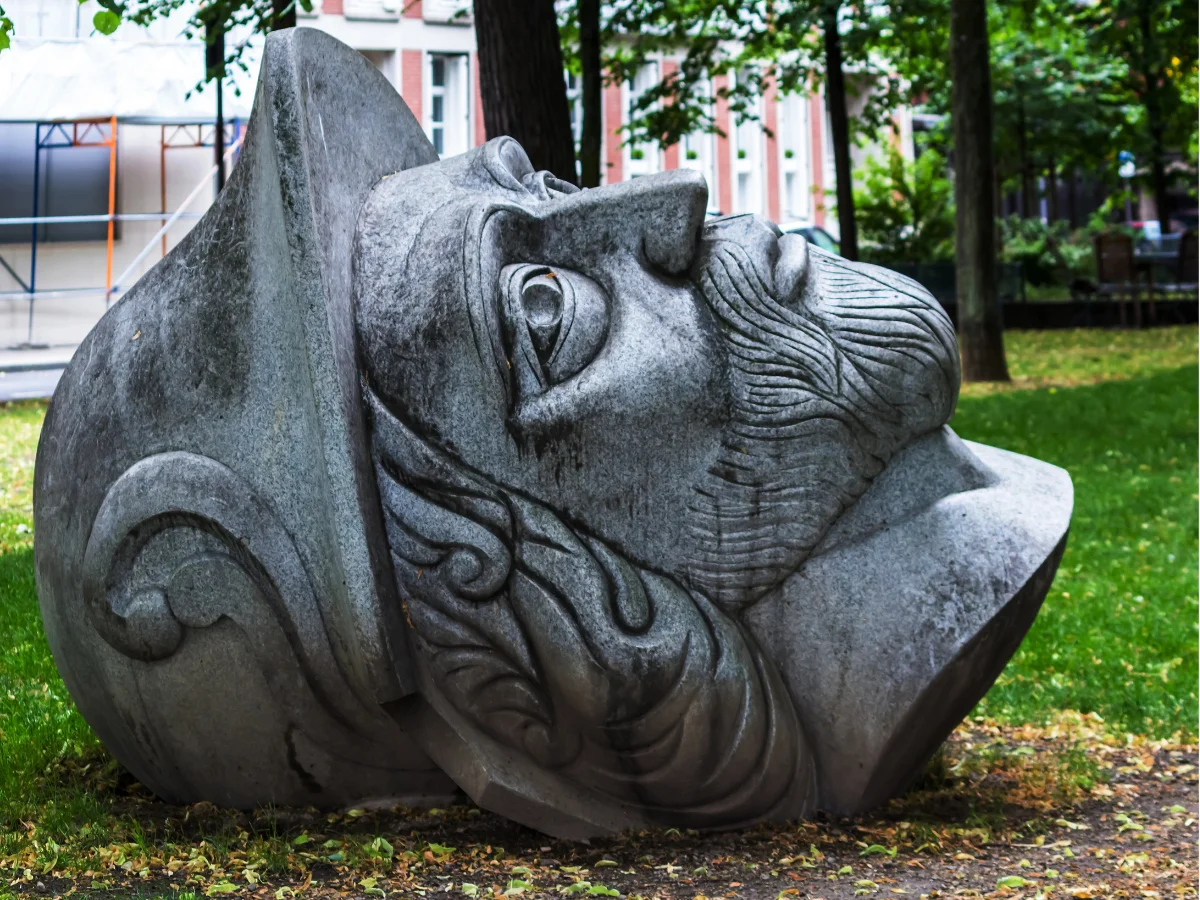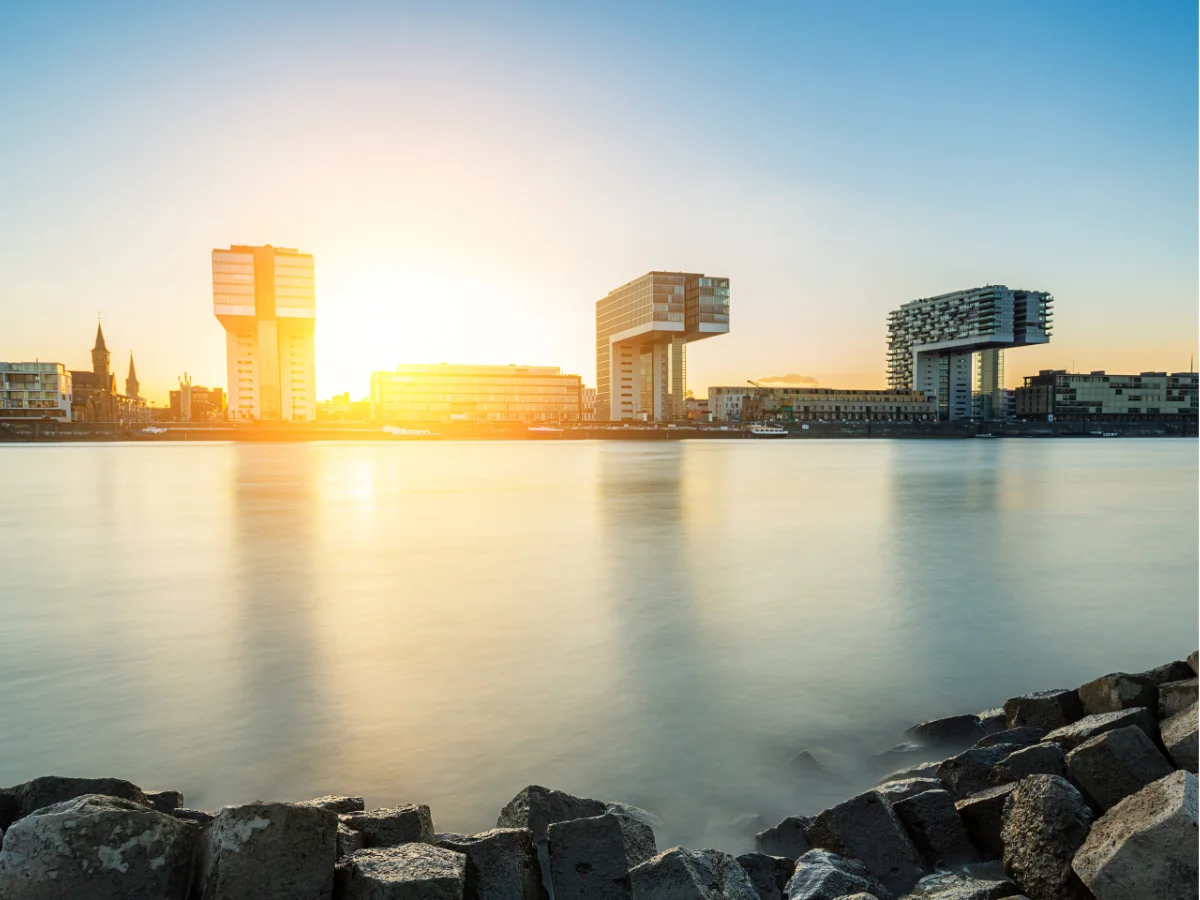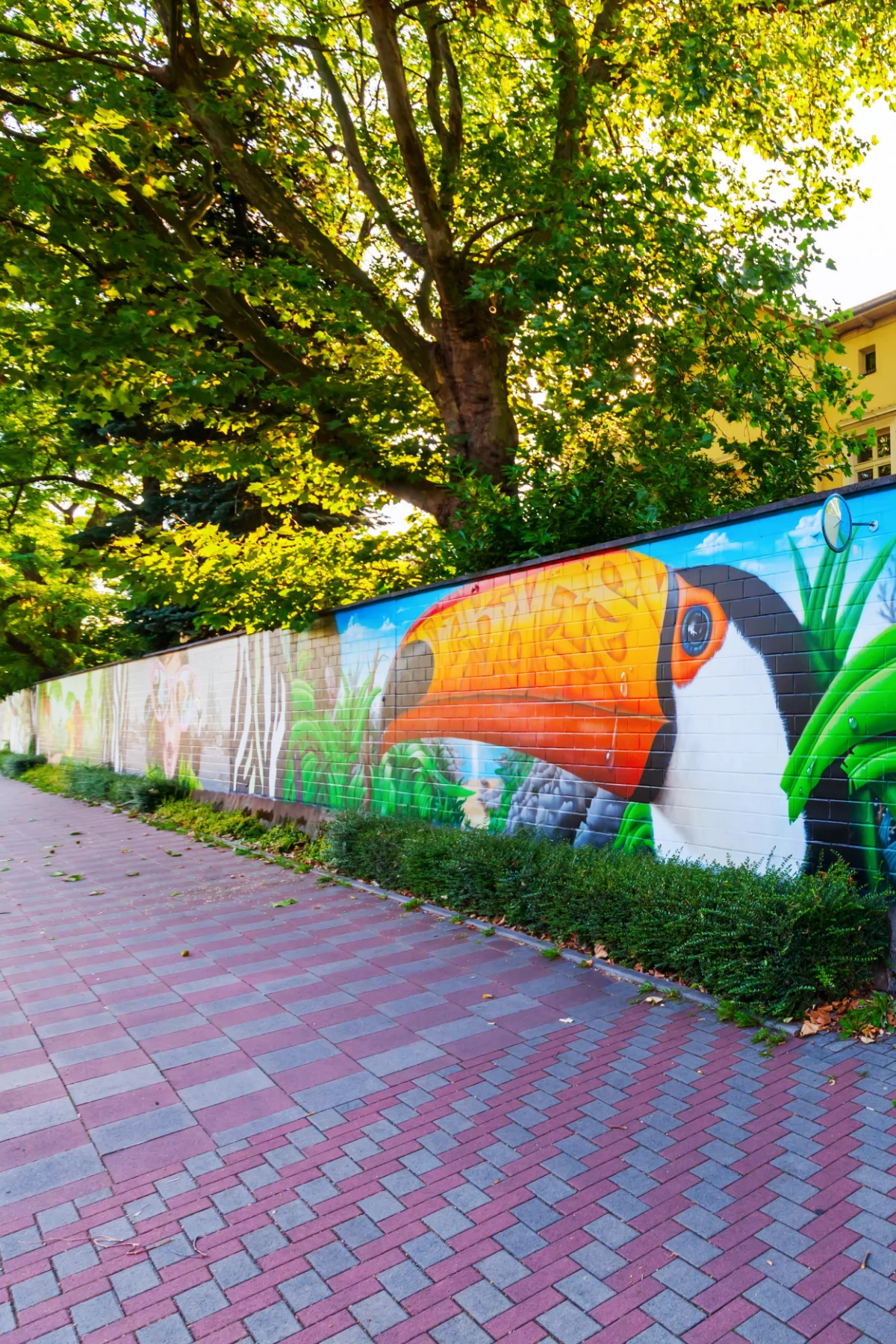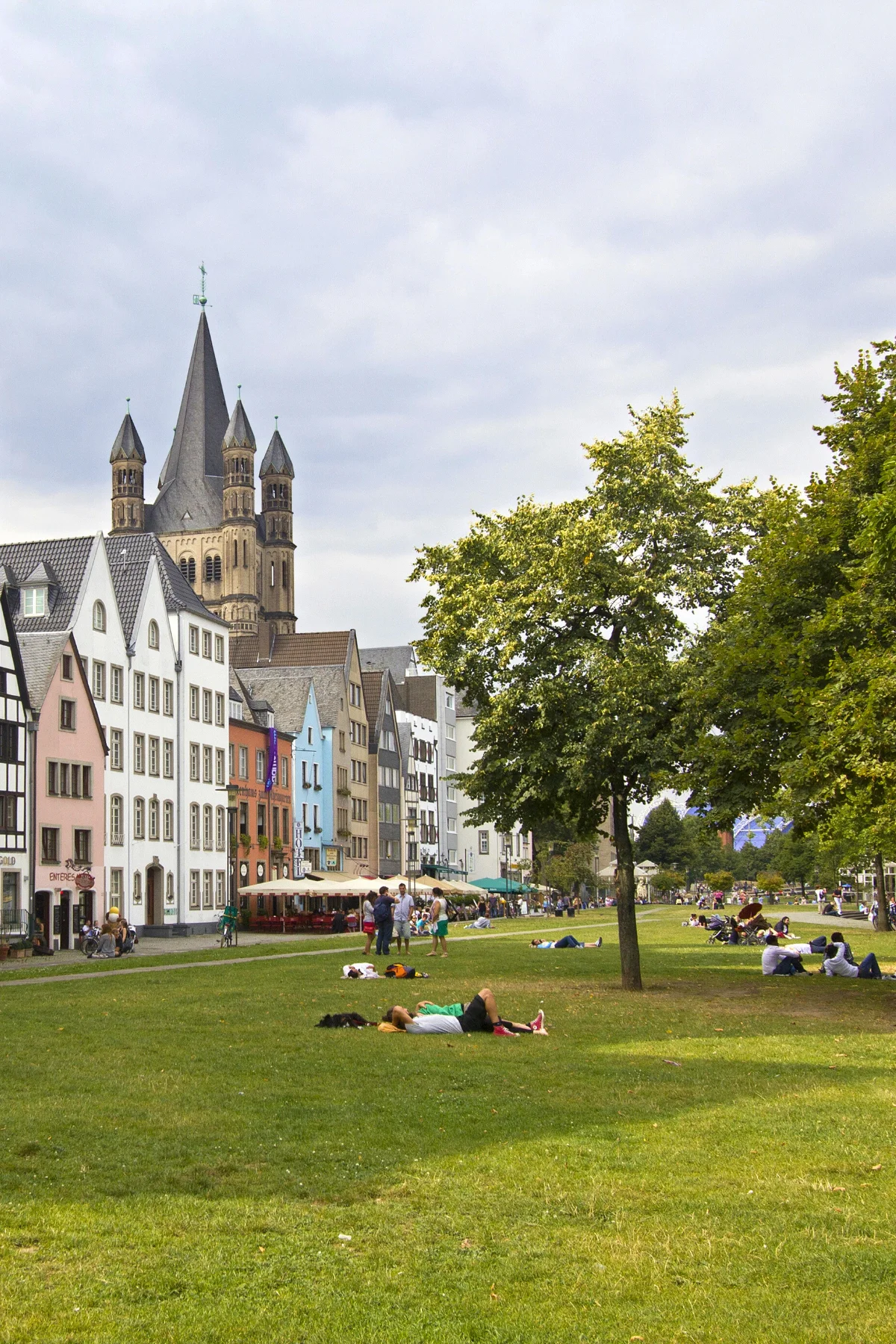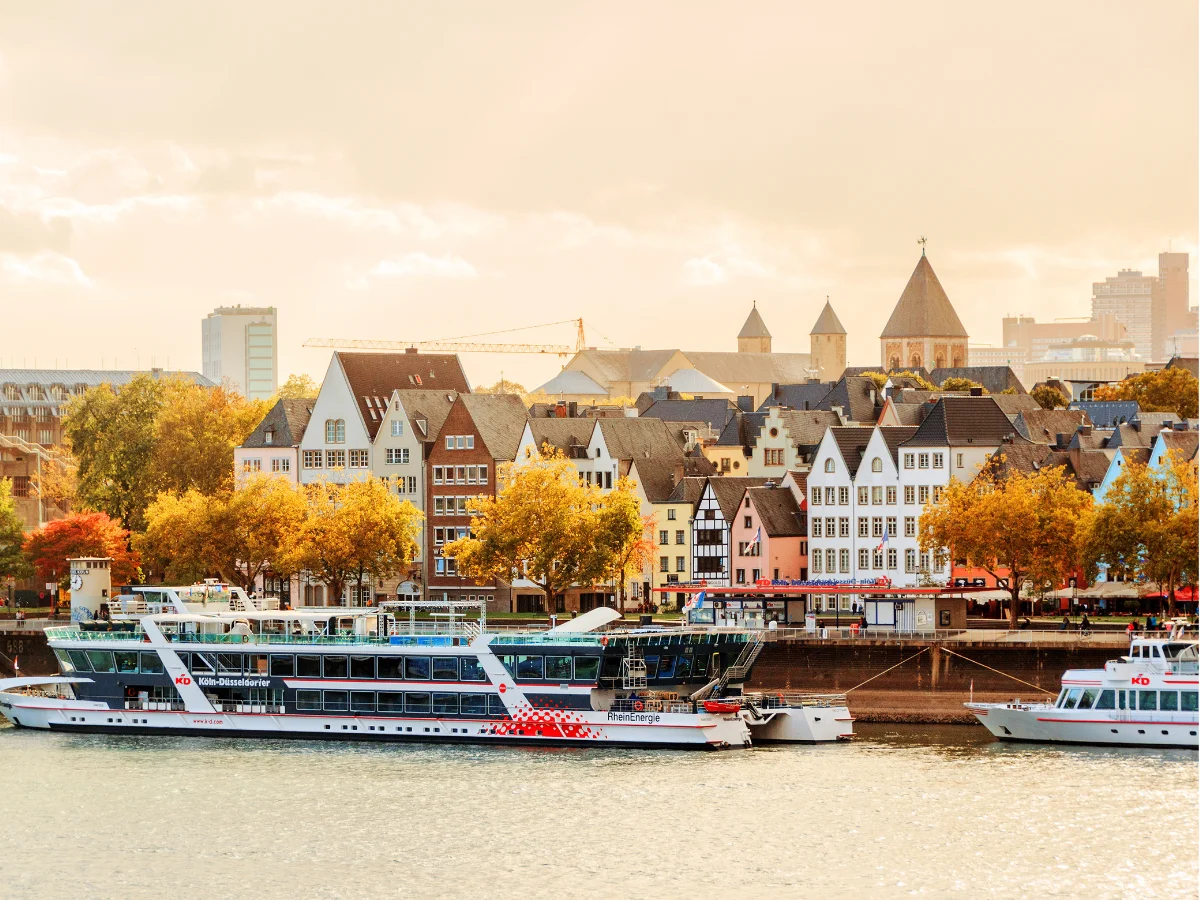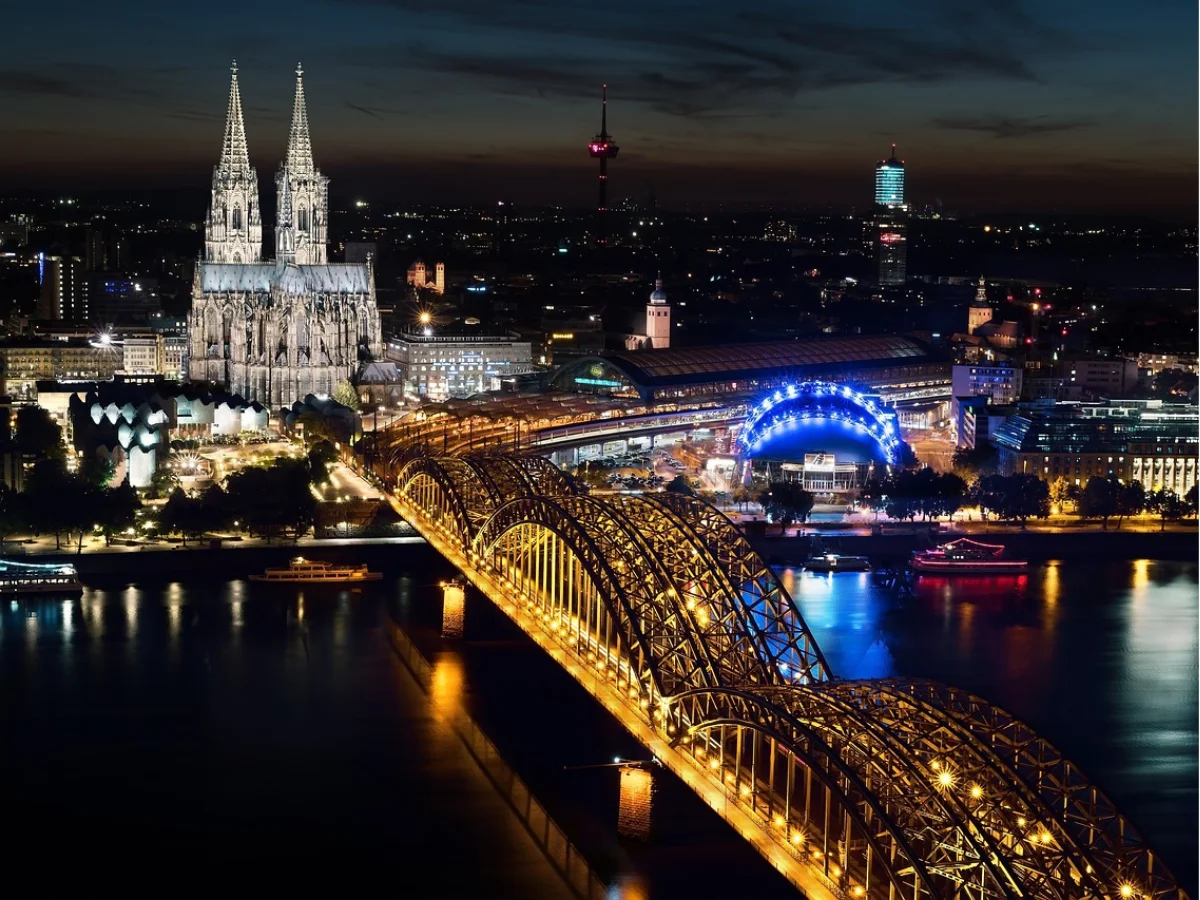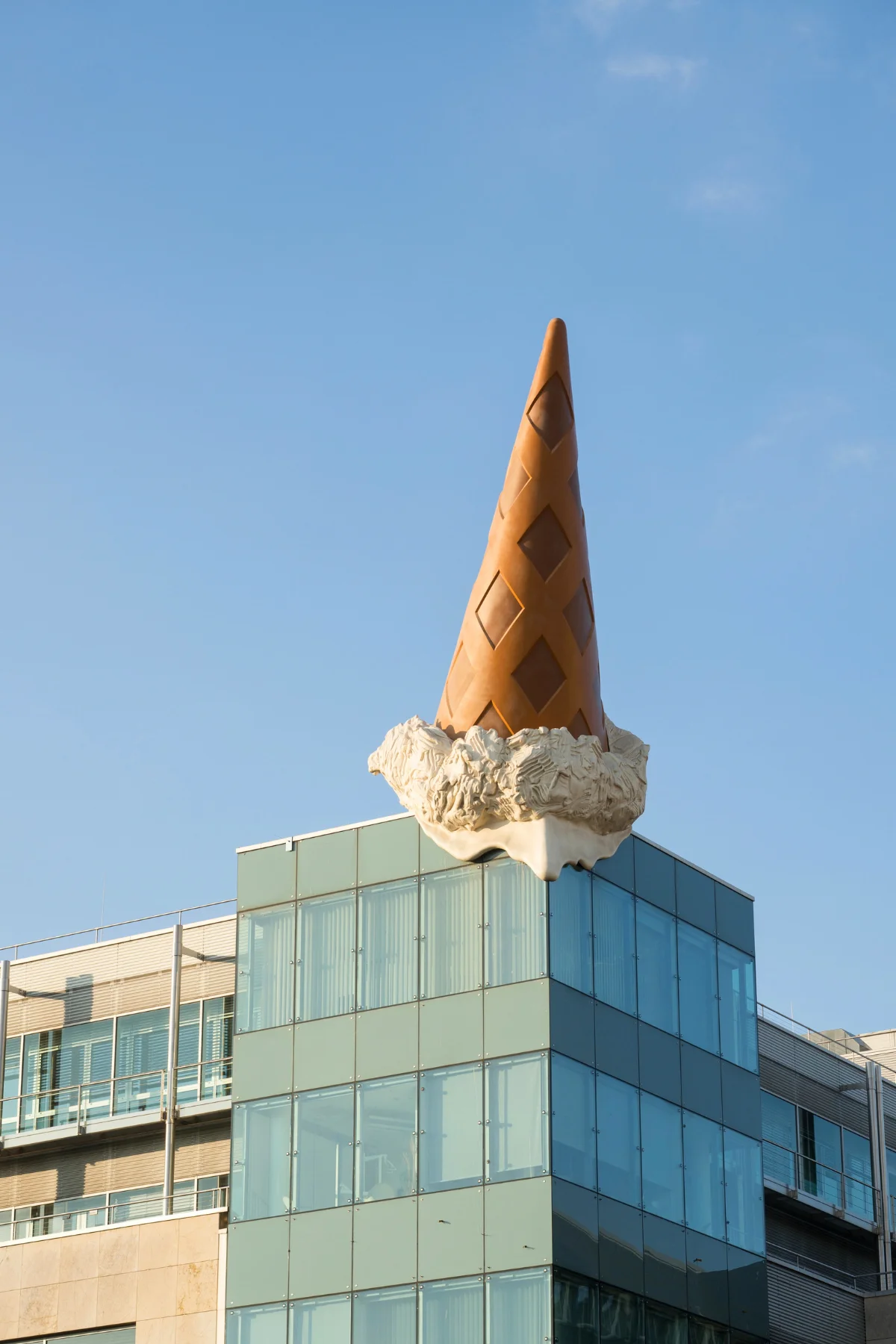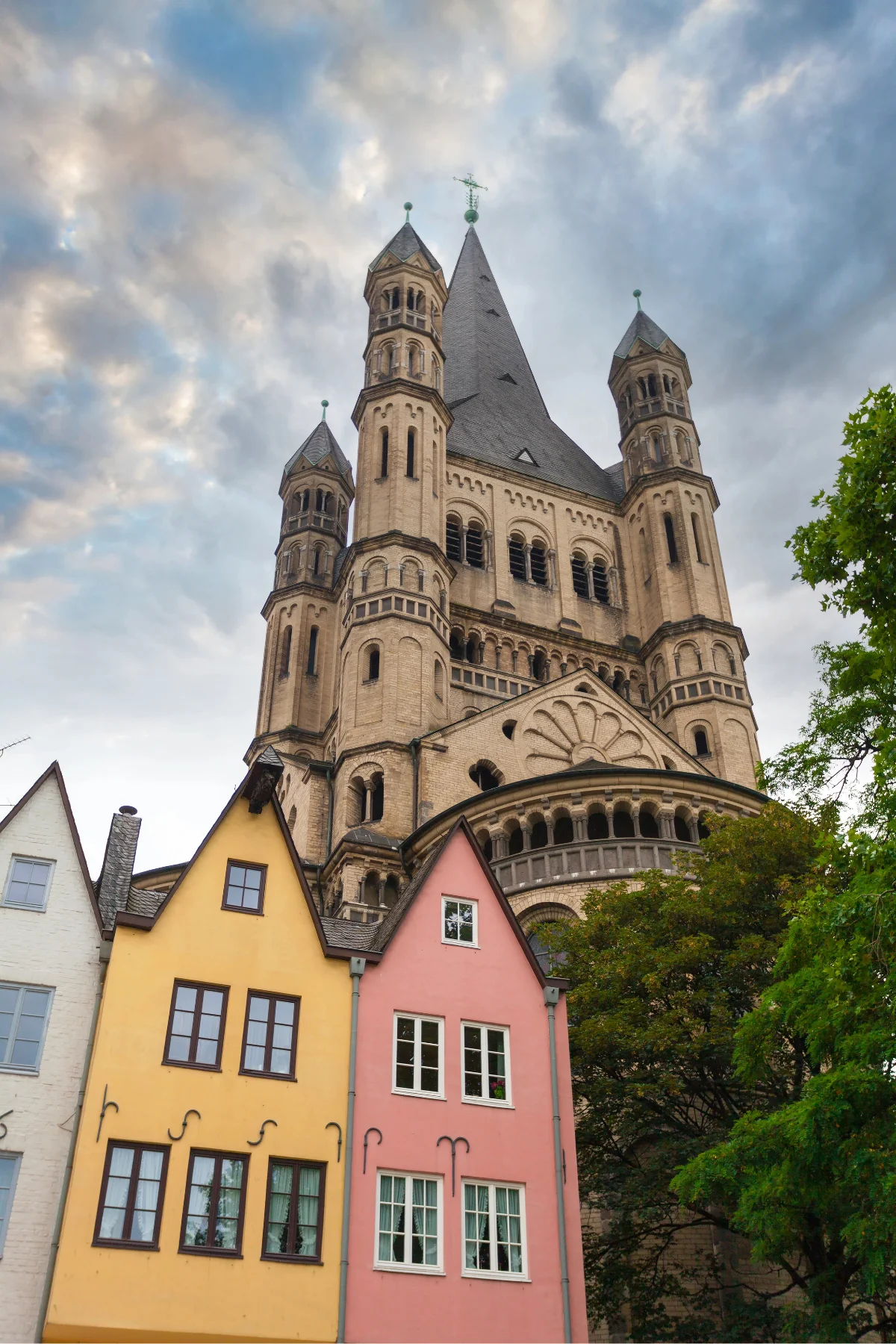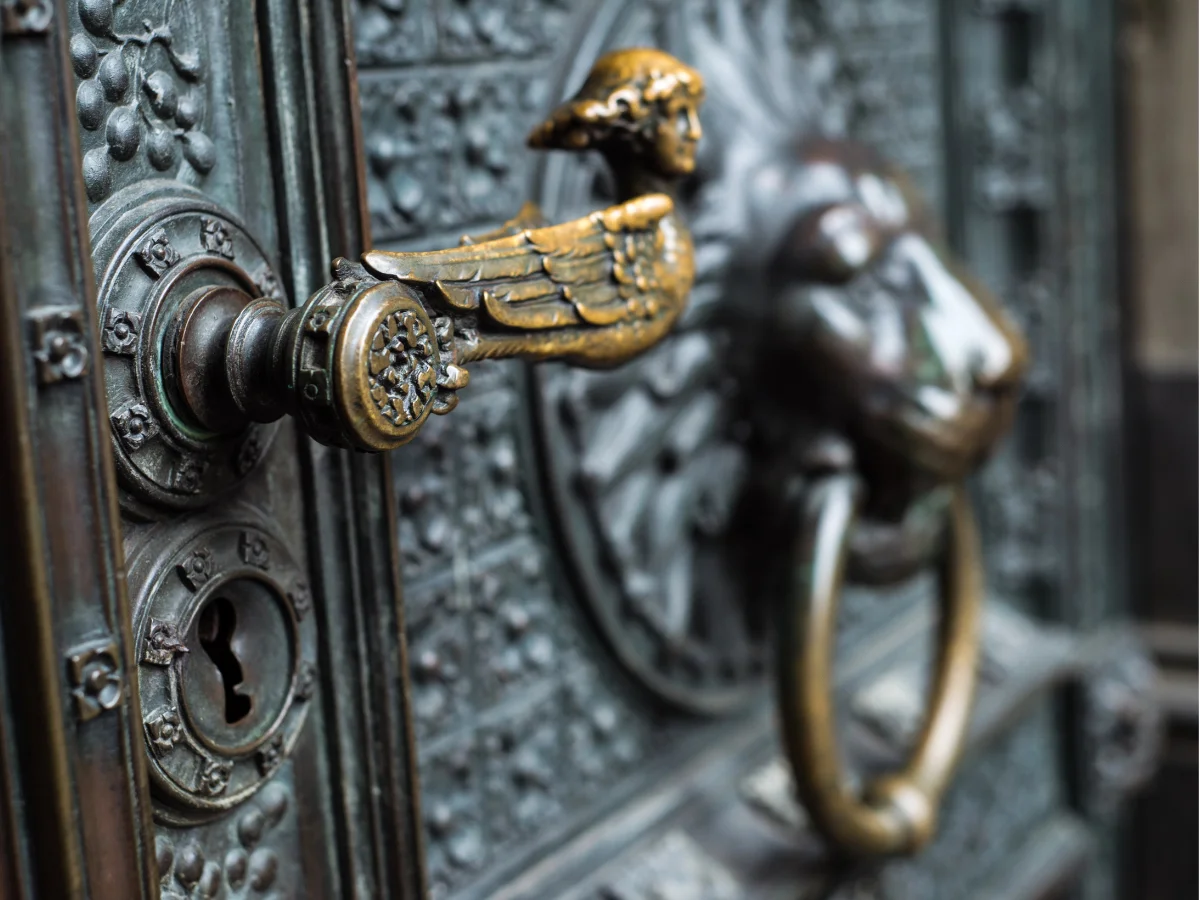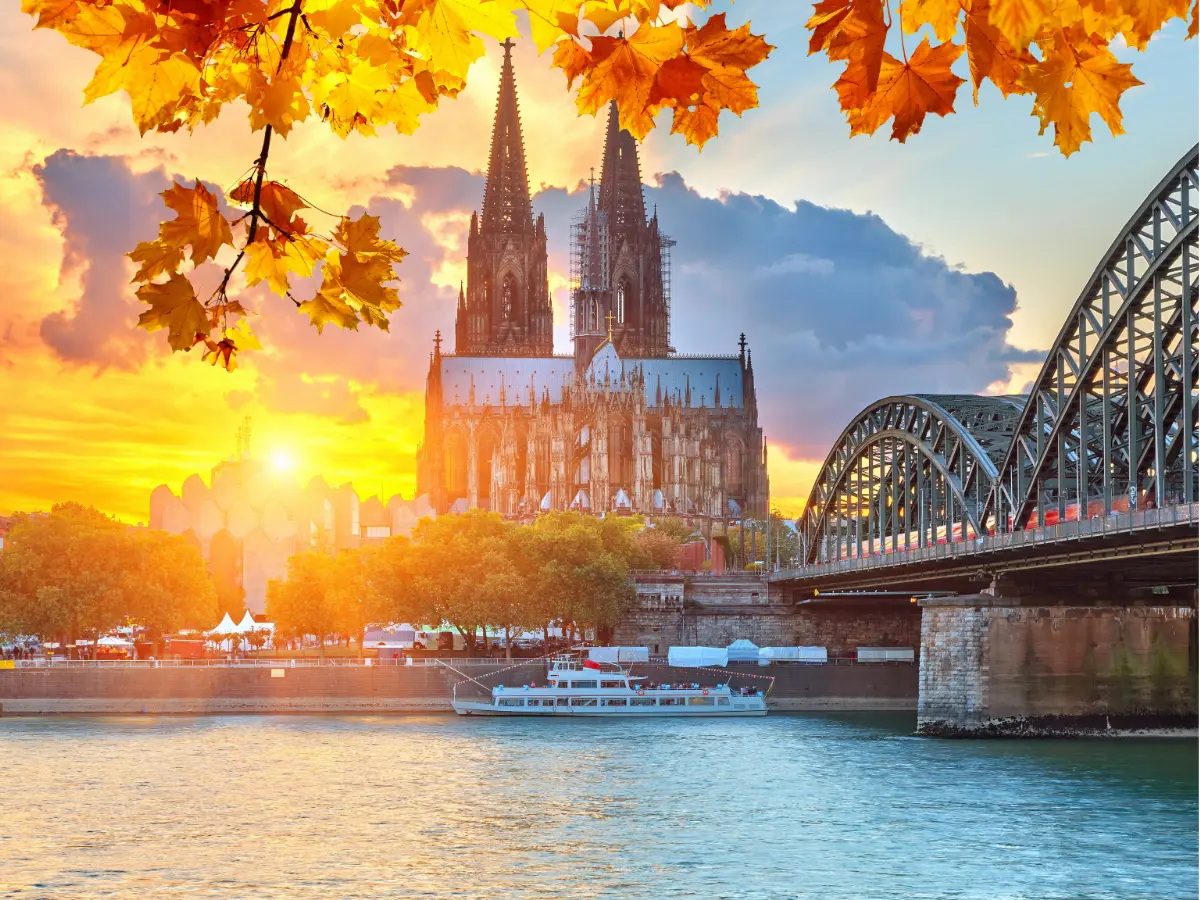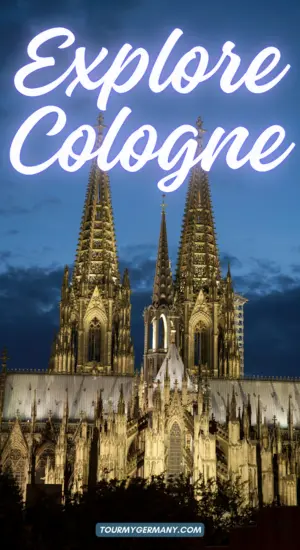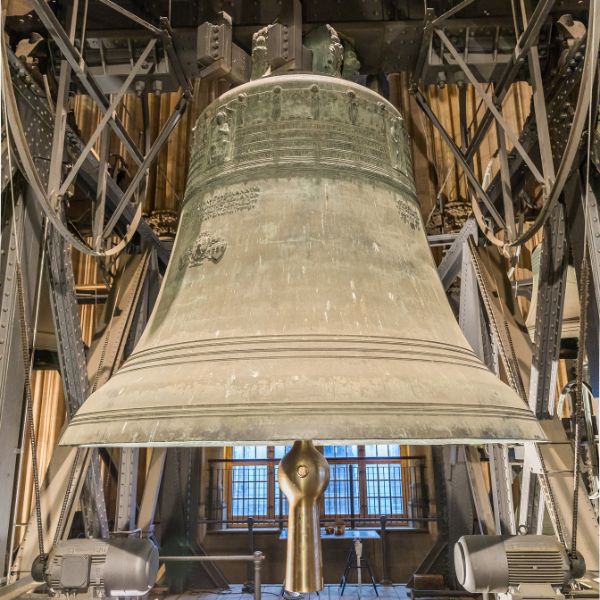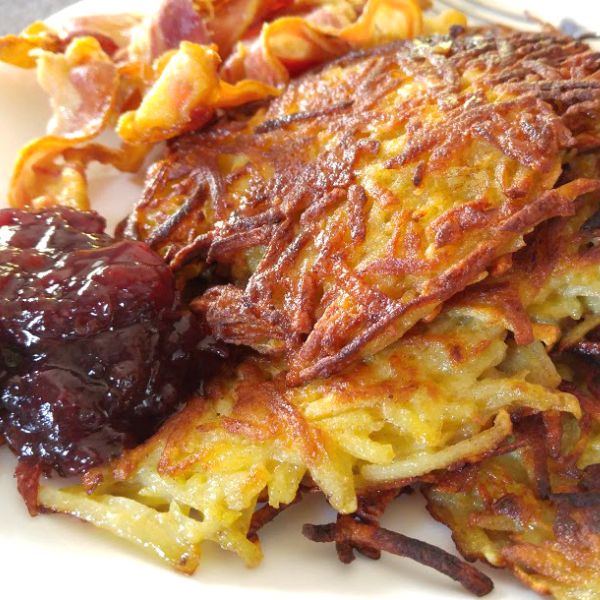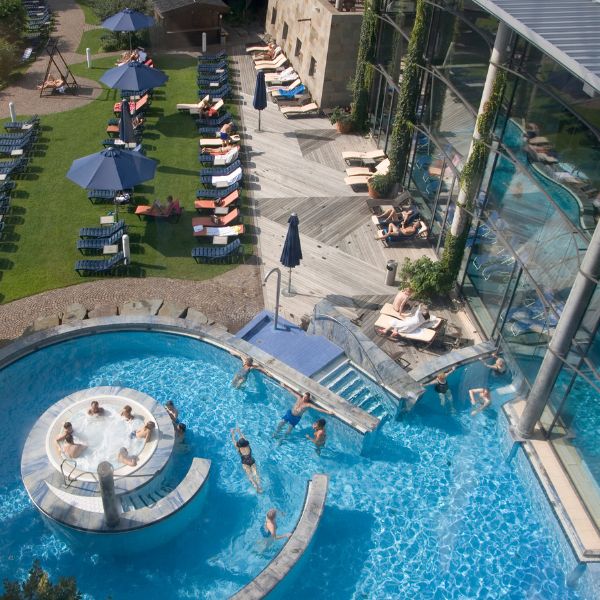- Home
- Top German Cities To Visit
- Things to do in Cologne
Things To Do in Cologne: A Guide to the City's Best Attractions
By: Eran Fulson / Traveler & Blogger / After 15+ years of travel across North America and Europe, I now help travelers experience Germany beyond the guidebooks with firsthand tips and cultural insights.
Best known for winding its way through centuries-old forests and fairytale valleys, the banks of the Rhine River also lay claim to Germany's fourth-largest city.
As much as the size of the city in addition to the culture within, things to do in Cologne are therefore quite abundant.
A beautiful city and home to many medieval churches and museums, Cologne is among the best European cities worth visiting.
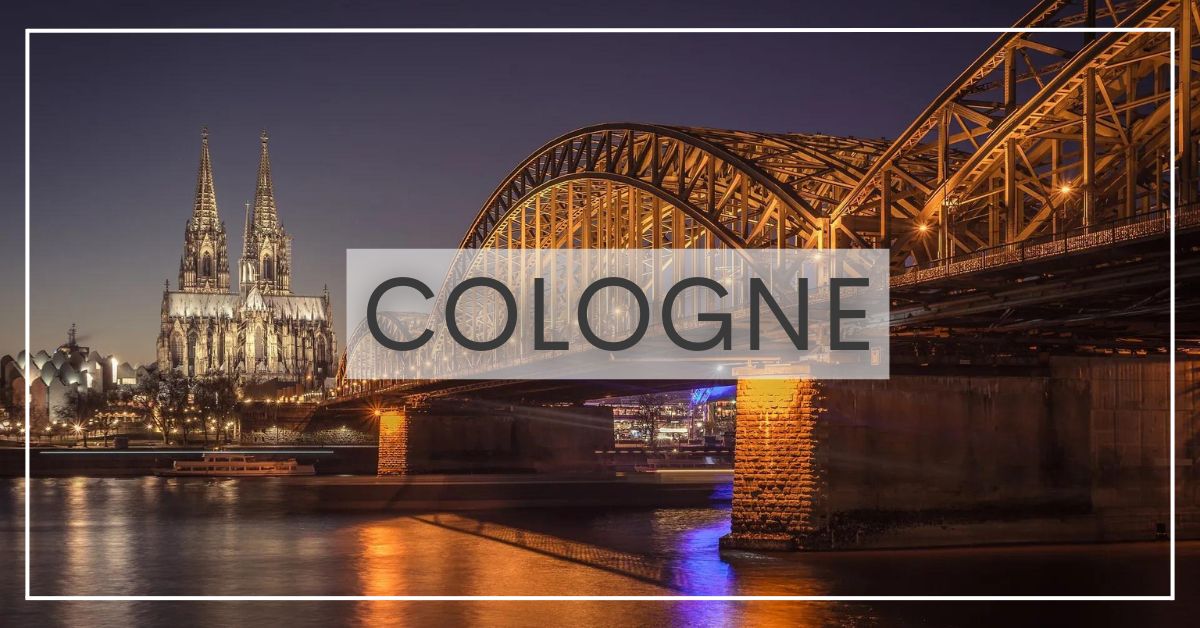
On this page:
Curated Gallery:
Nearly two thousand years of history have been produced by Cologne. It was founded as Colonia Agrippina in Roman times and eventually became the official name, which developed into modern German as "Köln."
The French then dubbed it "Cologne," which stuck as its globally known name today.
For a deeper dive into Köln vs Cologne and other cities like München vs Munich, check out my post on German Exonyms.
During the Middle Ages, Cologne was one of the largest cities in the period. Its history is filled with conflict and frequent changes in ownership, including being taken by the French (1794-1815), followed by the British (1918-1926), and then the Nazis during World War II.
During the Second World War, the city of Cologne served as a Military Area Command Headquarters, making it a valuable target for the Allies.
Virtually all the city center was destroyed by bombs, and over half of the surrounding area was also affected.
In the years that followed, Cologne was rebuilt with great attention paid to preserving its Gothic architecture, becoming a nearly new city and a jewel in Germany's crown.
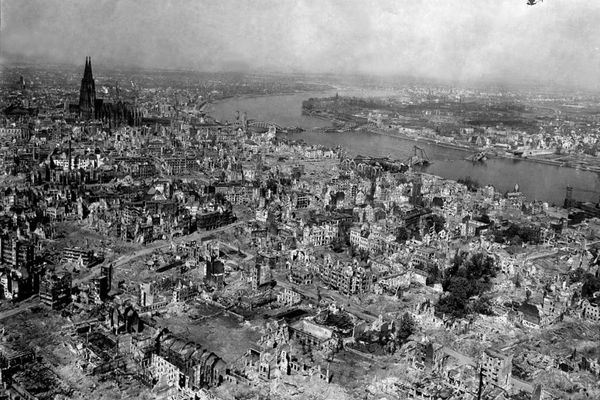 Photo taken on 24 April 1945, of Cologne, showing the two intact spires of the Cologne Cathedral and the damaged Hohenzollern Bridge.
Photo taken on 24 April 1945, of Cologne, showing the two intact spires of the Cologne Cathedral and the damaged Hohenzollern Bridge.Planning Your Trip
Getting There
From the Cologne Bonn Airport, you can reach the city center in about 15 minutes by car, train, or bus.
If you are traveling by train, the Cologne Central Station is located at the heart of the city on the west bank of the Rhine.
If driving, it's recommended to use one of the over 150 Park and Ride facilities or park in one of the 20,000 parking lots.
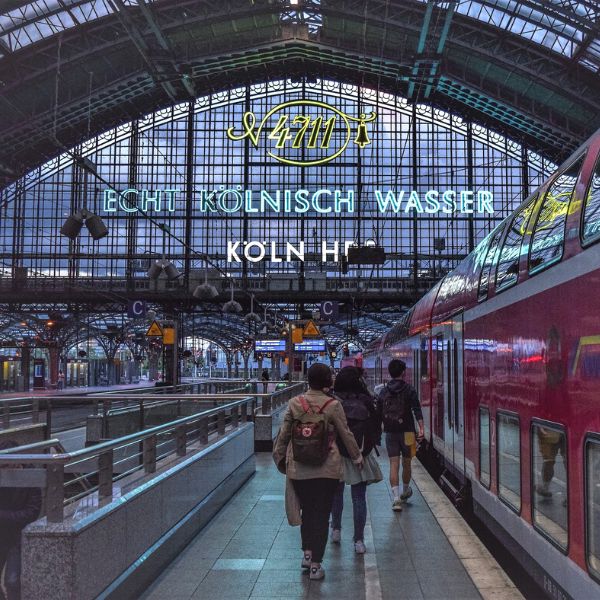
Getting Around
We've partnered with Stay22 to help streamline your holiday booking experience. Using the interactive map below, find your next home away from home. Also added are points of interest for things to do in Cologne that we cover in this post.
The public transportation network in Cologne was rebuilt with great attention to detail. Subways, buses, and trains run frequently throughout the day.
The KölnCard (Cologne Card) provides access to the public transport system and discounts on museums, restaurants, and cultural attractions.
Like many European cities, cycling is a great way to explore Cologne. With a well-developed network of bike lanes, getting around is easy.
Bikes can be rented from the main train station, only a short ride down to the Rhine Promenade. The Promenade is a flat, paved path following the riverbank which makes this a suitable starting point for all cycling skill levels.
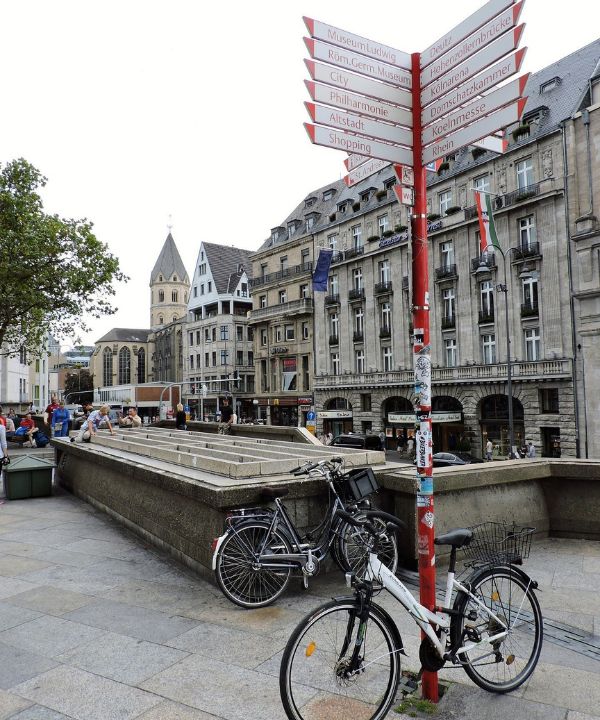 One of the best ways to get around Cologne
One of the best ways to get around CologneCologne is also known for its beautiful pedestrian walkways and has plenty of places to go for a stroll. The Hohe Strasse is a lively shopping street in the city center, and the Rhine Promenade, both of which run along the riverbank, offering impressive views of the city's skyline.
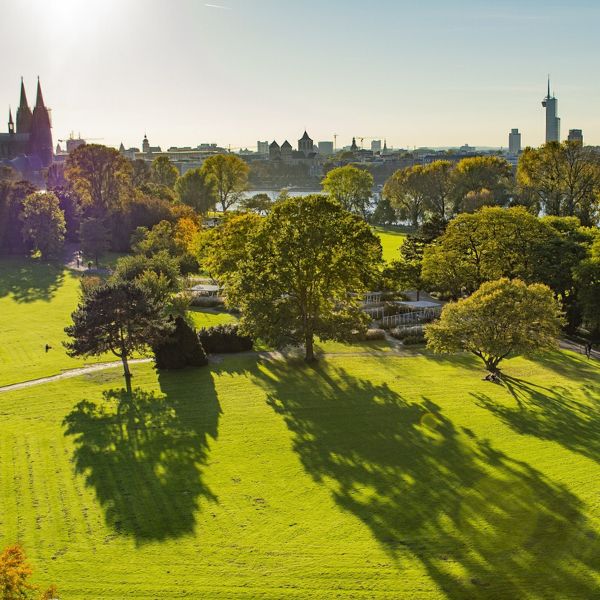 A perfect spot to relax in Cologne
A perfect spot to relax in CologneOther places to walk include the Alter Markt (Old Market), a central hub of the city for centuries. Here you can find cafés in half-timbered houses and entertaining street performers.
Things to do in Cologne
“A Museum for Every Occasion” might not be the official tagline, but it should be. Museums are one of the best things to do in Cologne, offering a wide range of interests. With too many to delve into at great length, we'll cherry-pick some of the best ones.
Wallraf-Richartz Museum
The Wallraf-Richartz Museum is located just a short walk from Cologne City Hall and showcases European art from the Middle Ages to the present, including works by Van Gogh, Renoir, Monet, and Rembrandt. It also has a 360-degree virtual tour.
Museum Ludwig
The Museum Ludwig features an extensive collection of modern art from the 20th and 21st centuries.
German and international contemporary art features displays and pieces by Andy Warhol and Roy Lichtenstein.
For the discerning connoisseur, it also has one of the largest Picasso collections in Europe.
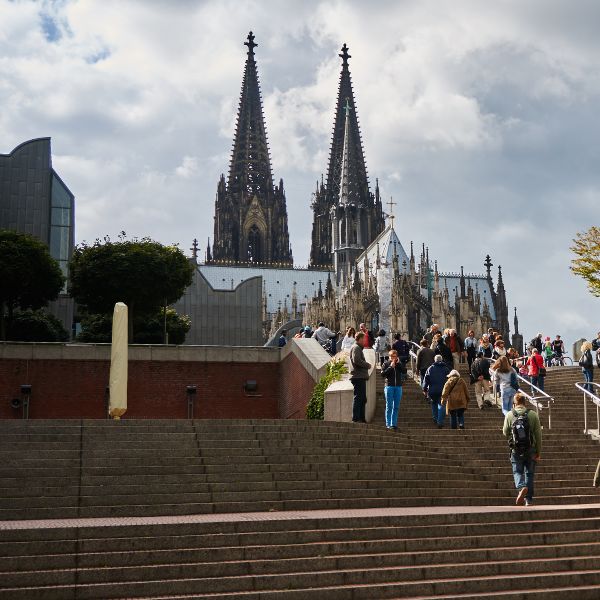 The Cologne Cathedral always makes a good reference point if you're lost
The Cologne Cathedral always makes a good reference point if you're lostRömisch-Germanisches Museum (Roman-Germanic Museum)
The Römisch-Germanisches Museum is considered one of the world's best Roman art and culture museums and houses a comprehensive collection of Roman artifacts, including the famous Dionysus Mosaic.
The museum was designed around the foundations of the Roman villa where the mosaic was discovered, which is considered to be one of the most important Roman mosaics north of the Alps.
Farina Duftmuseum (Farina Fragrance Museum)
The Farina Duftmuseum is located in the same building where Johann (formerly Giovanni) Maria Farina created the internationally renowned scent, Eau de Cologne. Visitors can see the original cellar vaults and a replica distillery on display, but only with a guided tour.
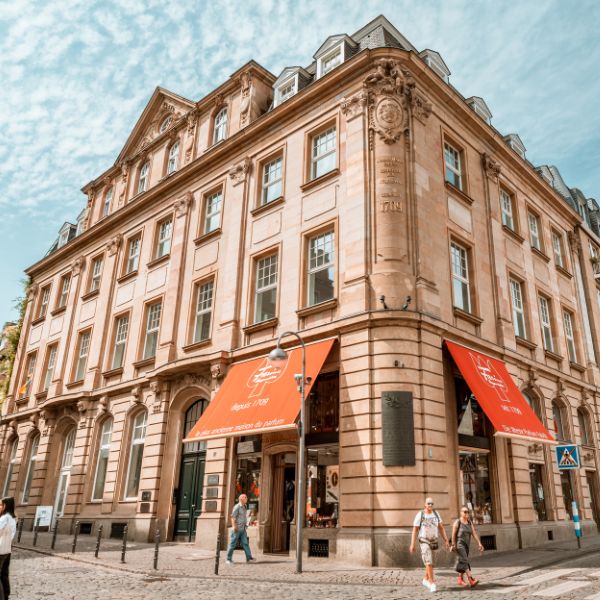 Passing the sniff test
Passing the sniff testThis is not to be confused with the Original Eau de Cologne 4711, which really wasn't original, but based on Farina's creation. You'll find that at Glockengasse 4711, just a 6-minute walk from Farina's.
This visiting card from Johann Farina is a copy of a 1888 print. It shows the founding date as 1709.
According to legend, the popular 4711 Eau de Cologne was created in 1792 when businessman Wilhelm Mülhens was given the secret recipe as a wedding present.
What isn't legend is that my Mom's favorite scent is 4711, just like my Oma's was. Good things are indeed passed from generation to generation.
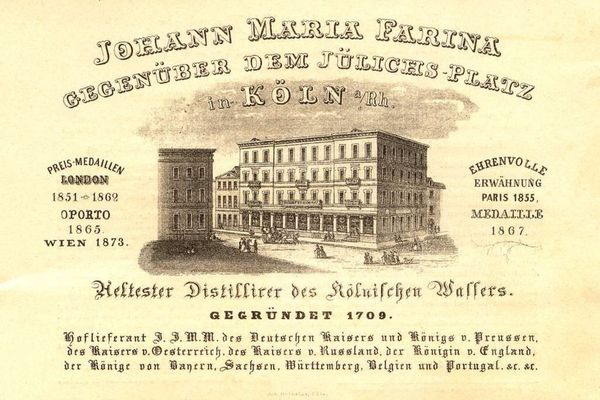
Schokoladen Museum (Chocolate Museum)
Germany is Europe's largest producer of chocolate and houses the world's largest museum on the subject.
The Schokoladen Museum showcases the history of chocolate, from its origin in Central America to its arrival in Europe.
Visitors can also have their own chocolate creation made or enjoy the landmark 10-foot (3-meter) high chocolate fountain. If this isn't one of the best things to do in Cologne, then it has to be close.
Make sure to bring your stretchy pants and stay a while.
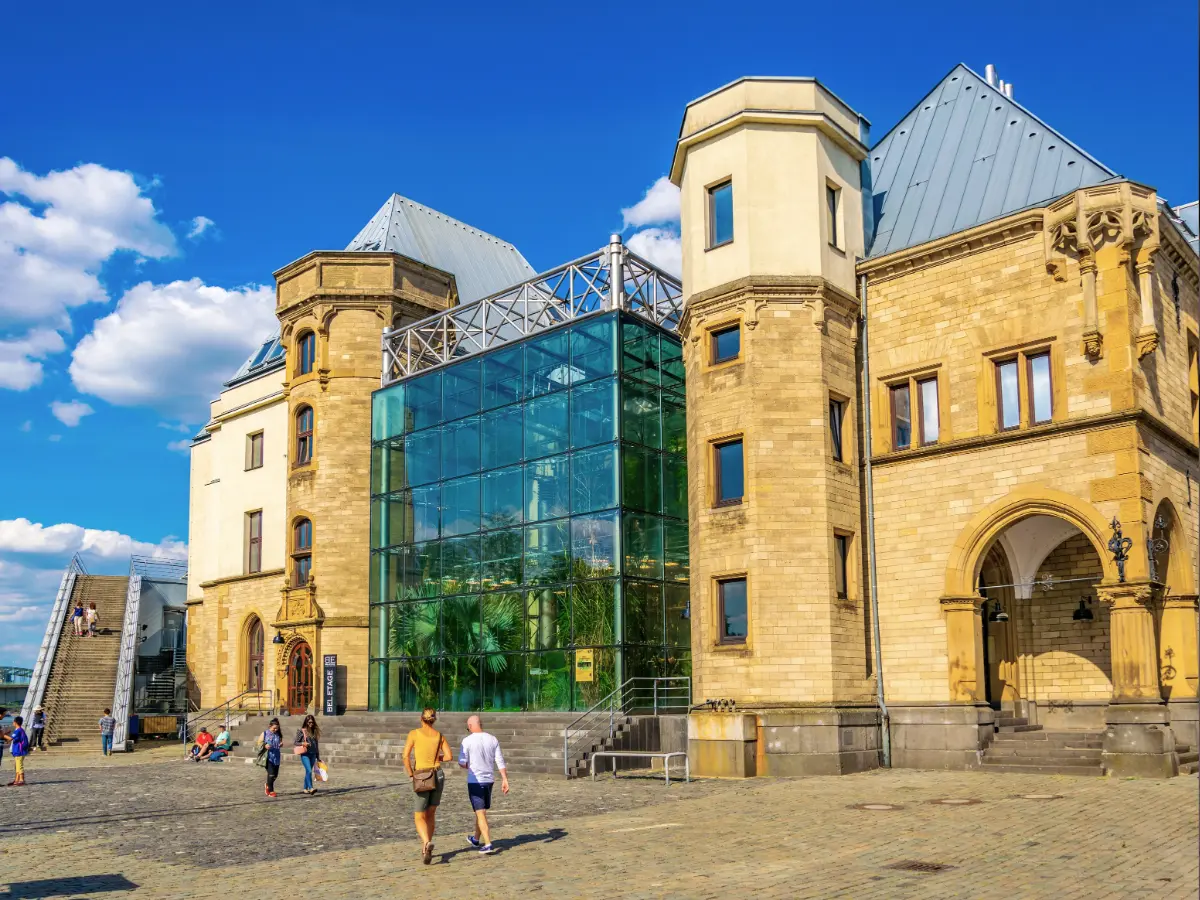
Senfmuseum (Mustard Museum)
Yes, mustard.
The first of its kind (unbelievably). This museum is dedicated to all things mustard and uses original 15th and 18th-century recipes.
Visitors can see the whole production process and view one of the oldest mustard mills in Europe, fully restored and operational.
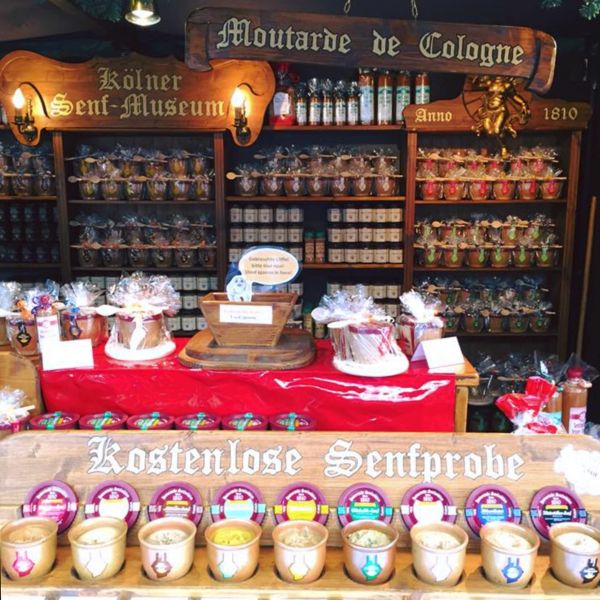 Mustard lovers of the world unite
Mustard lovers of the world uniteVisiting the Kölner Dom (Cologne Cathedral)
I would've placed this above the museums in regards to popularity. However, attempts were made to dispel any perceived bias.
Top of our list of the best things to do in Cologne is one of the most visited landmarks in the city, the Kölner Dom (Cologne Cathedral).
This is a must-see location that finds itself on most people's travel itineraries. It's also a pilgrimage destination for Catholics worldwide and is regarded as one of the best attractions in Germany.
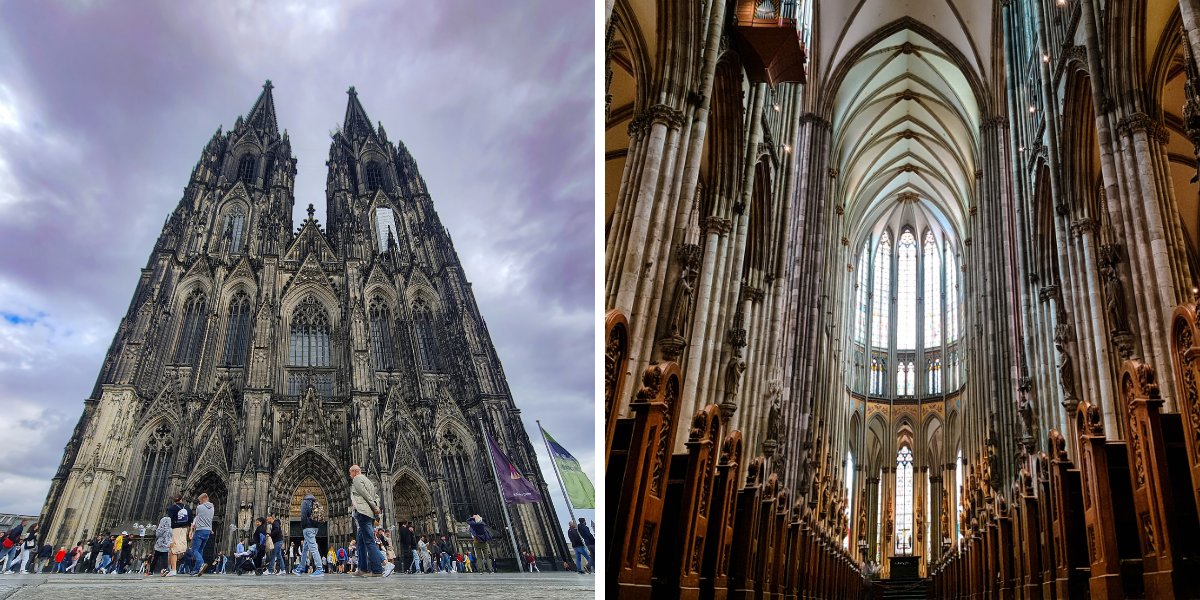 Photos of the cathedral from our summer tour
Photos of the cathedral from our summer tourThe cathedral took over 600 years to complete and has survived several bombings during World War II. It is a UNESCO World Heritage Site and once held the title of the tallest structure in the world until 1884.
Today, it is the tallest twin-spired church and the third-tallest church of any kind globally.
Inside the cathedral, visitors can view the Shrine of the Three Kings, which is said to contain the bones of the three wise men who visited Jesus as a baby. It is widely considered one of the most significant reliquaries of the Middle Ages.
To experience breathtaking views, head to the tower and climb the 533 steps. On the way, you'll pass St. Peter's Bell, the largest free-swinging church bell in the world, which weighs a massive 26.5 tons (24 tonnes).
It's only rung on major holidays, so don’t worry about thinking that your watch is wrong.
Exploring the Groß St. Martin (Great St. Martin Church)
The Great St. Martin Church is one of the oldest Romanesque churches in Cologne.
It was built on the remnants of a Roman chapel and was rebuilt three times following a fire in 1150 and air raids during World War II.
Today, the church is known for its stained glass windows and its soaring crossing tower, which is a landmark in Cologne's Old Town.
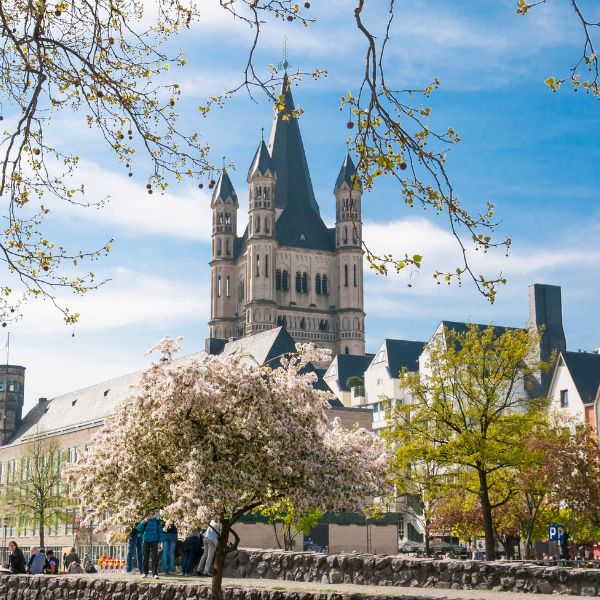 One of Cologne's famous landmarks
One of Cologne's famous landmarksBotanische Garten (Botanical Garden)
This attraction will satisfy any green thumb. Once one of the best things to do in Cologne, the original botanical garden was located at the cathedral.
Due to infrastructure expansion, it then needed to be relocated to make way for a new central train station in 1857.
A 13.6-acre (5.5-hectare) landscaped flora was developed in the north of Cologne in 1864, and an additional 11-acre (4.5-hectare) botanical garden was established in 1914.
The current botanical garden boasts nearly 12,000 species of plants, trees, and cacti, and admission is free.
Visitors can lose themselves in an old-growth green tunnel or explore the world's gardens through an English landscape garden, a French Baroque garden, and an Italian Renaissance garden.
Did I mention they have gardens?
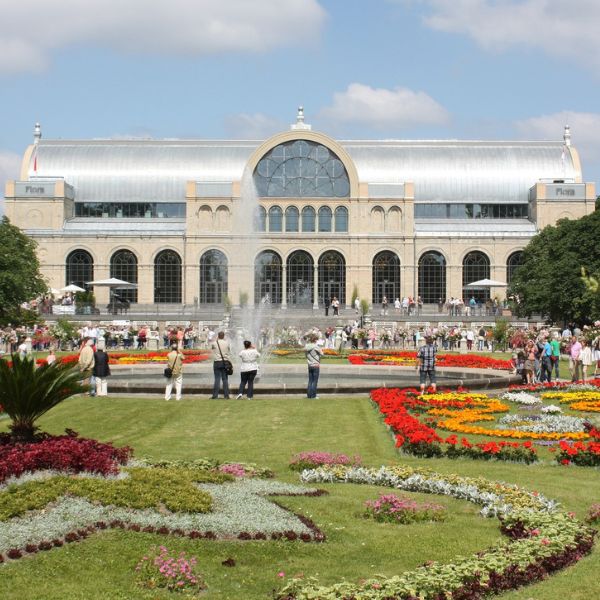
Walk the Hohenzollernbrücke (Hohenzollern Bridge)
This culturally significant bridge is among the most romantic of things to do in Cologne.
Hohenzollernbrücke, by name, is affectionately known as the Love Lock Bridge.
The tradition of couples writing their names on a lock, attaching it to a public thoroughfare, and throwing away the key started in Italy, but it began appearing on the Hohenzollern Bridge in the summer of 2008.
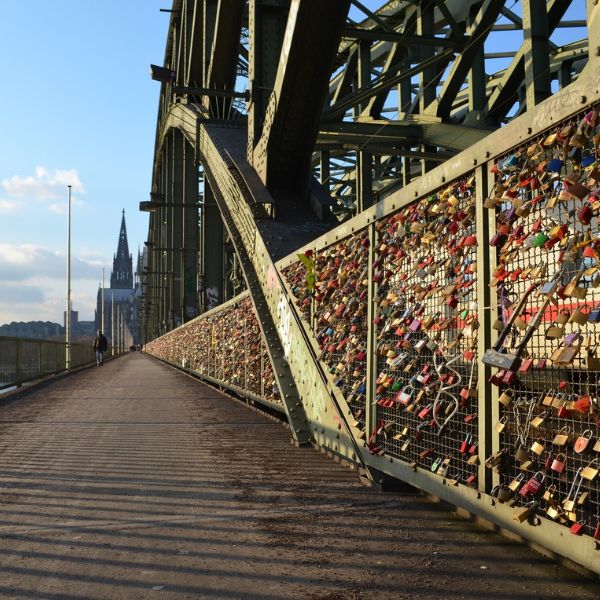 When roses aren't enough
When roses aren't enoughBy 2011, over 40,000 individual love locks were counted, and today, those numbers are estimated to be around 340,000, with an equal amount of keys lying at the bottom of the Rhine.
German Rail estimates the extra weight to be between 40 to 45 tons, but it currently poses no risk to the bridge.
As Nietzsche famously said, "There is always some madness in love..."
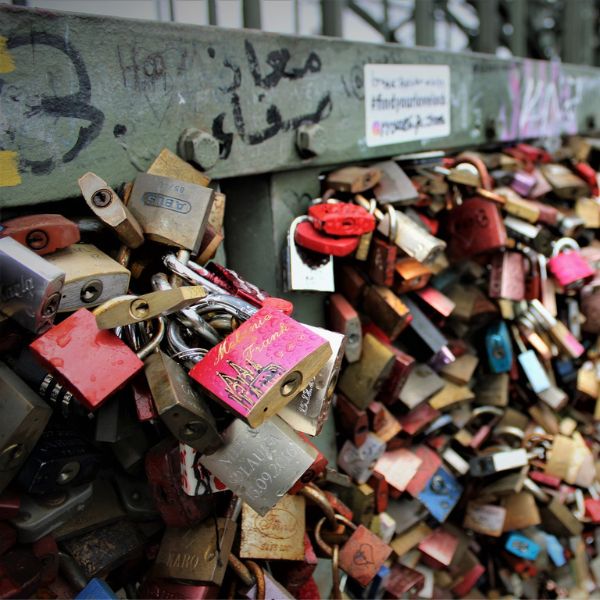 Weighty love
Weighty loveTry the Essen und Kölsch (Food and Beer)
We're often led by our appetite when traveling, so it's helpful that one of the best things to do in Cologne involves food.
It's a true foodie's paradise, with 1,240 restaurants, 770 pubs, and 660 international snack bars to choose from. The local cuisine is hearty and rustic, and some dishes have an acquired taste.
Popular dishes include Rhenish Sauerbraten (a marinated pot roast) and Himmel un Äd (Heaven and Earth), which consist of mashed potatoes and apple sauce fried with black pudding or sausage.
A street food specialty is Rievkooche (potato fritters or pancakes) topped with apple or cranberry sauce, as shown above. For those who prefer meat-free options, there are plenty of vegetarian and vegan options available.
Kölsch is a popular local beer that is unique to Cologne and can only be brewed in the city due to EU protected geographical indication. It is one of the most strictly adhered-to styles of beer in Germany.
There are 25 breweries in Cologne, so it is hard to miss even if you're not looking for them.
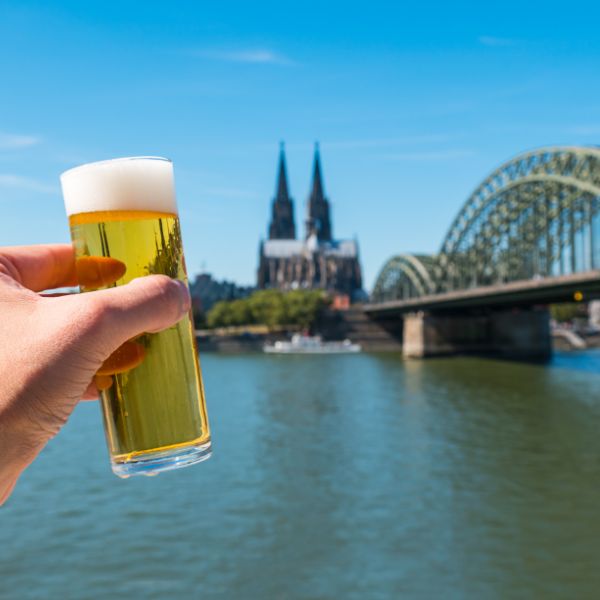 Prost!
Prost!This beer is served in its own special glass, tall and narrow, called a Stange (rod), holding only about 7 ounces.
Have a Spa Day
The thermal spa in Cologne, known as Claudius Therme, is a relatively new addition to the city's offerings, established 120 years ago. The spa draws thermal mineral water from deep underground for swimming, drinking, and inhaling.
The water is naturally enriched and has been shown to be beneficial for circulation, joints, intestines, and heart conditions by the Institute Fresenius.
Visitors can enjoy the buoyancy from added Dead Sea salts in the pools, which leaves them feeling lifted and refreshed.
Celebrating Karneval
When the carnival season comes around, it's one of the best things to do in Cologne. And there is only one option: join in or stay in.
The Cologne Karneval, also known as the 'Crazy Days,' takes over the city in February between Weiberfastnacht (Fat Thursday) and Aschermittwoch (Ash Wednesday).
It is one of the largest street festivals in Europe, attracting more than one million spectators for the Rose Monday parade. The festival dates back to the early Middle Ages, when ancient Germanic tribes drove out the evil demons of winter, and has been celebrated for 190 years.
The festival is filled with colorful pageantry, live music, parades, and a wholly joyous celebration. Visitors will hear "Kölle Alaaf" (Long Live Cologne) called out throughout the city, making it a completely immersive experience not to be missed.
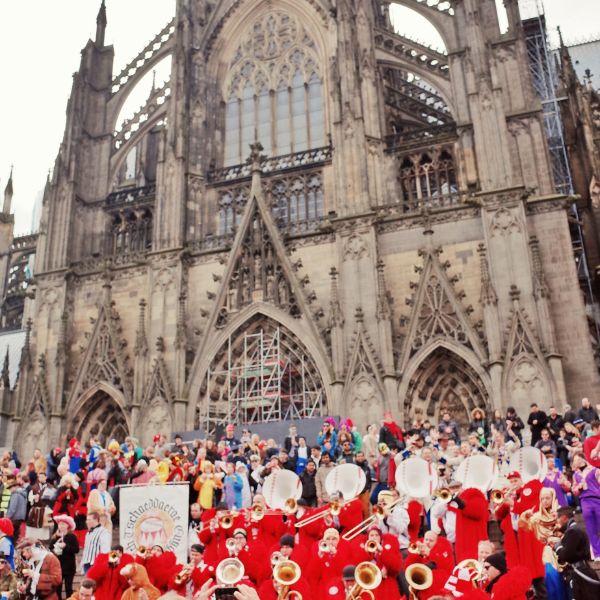 Party time
Party timeCologne Christmas Markets
The festive season in Cologne offers a great opportunity to enjoy a range of Christmas novelties.
Although the city is an ancient kind of old, Christmas markets are a relatively recent occurrence.
The first Nicolaimarkt opened in 1820, but was eventually banned by local authorities 65 years later due to rowdiness. Markets started appearing again in 1970.
There are now several markets available from late November until just before Christmas. In 2022, there were six markets scattered throughout the city. Here are some of the best:
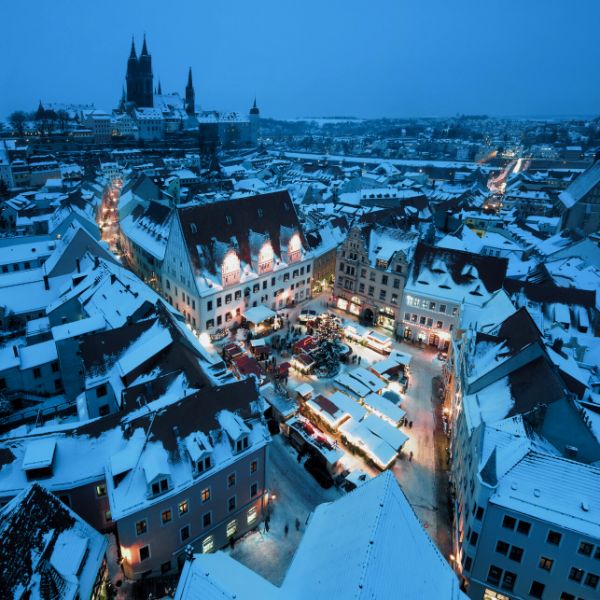 S'no time like Christmastime
S'no time like Christmastime1 - Weihnachtsmarkt am Kölner Dom (Cologne Cathedral Christmas Market)
The twin-spires of the Cathedral are transformed into a mystical structure by a canopy of glittering lights below.
One of the most imposing settings for a Christmas market, the Weihnachtsmarkt am Kölner Dom offers an array of traditional German treats and Glühwein (mulled wine).
The iconically Gothic backdrop is definitely unique and makes this stop a worthwhile one.
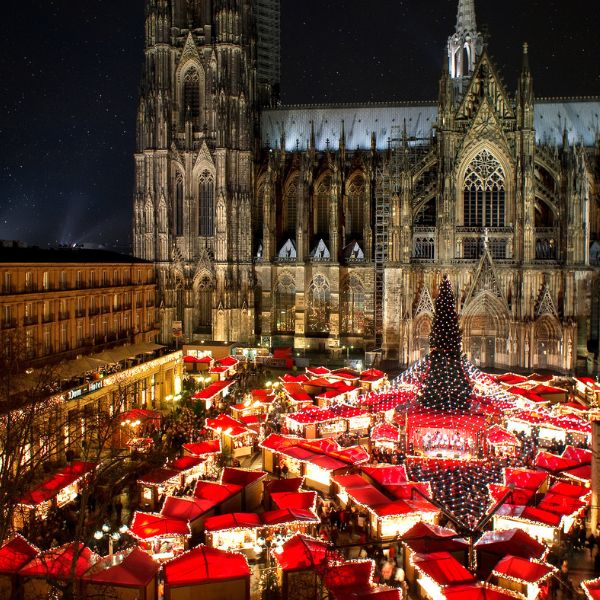 Surely there's no better market backdrop than this?
Surely there's no better market backdrop than this?2 - Heinzels Wintermärchen (Heinzel’s Winter Fairy Tale)
Heinzels Wintermärchen is the largest Christmas market in the old town and has one of Germany's most beautiful open-air ice rinks. Over 100 stalls offer a wide range of food specialties and handmade gifts.
Legend has it that the Cologne Brownies (The Heinzelmännchen) used to help local craftsmen at night until a curious tailor's wife drove them away. They return every year for Heinzel's winter fairy tale and take center stage.
These little guys are cousins to elves, leprechauns, and traditional garden gnomes.
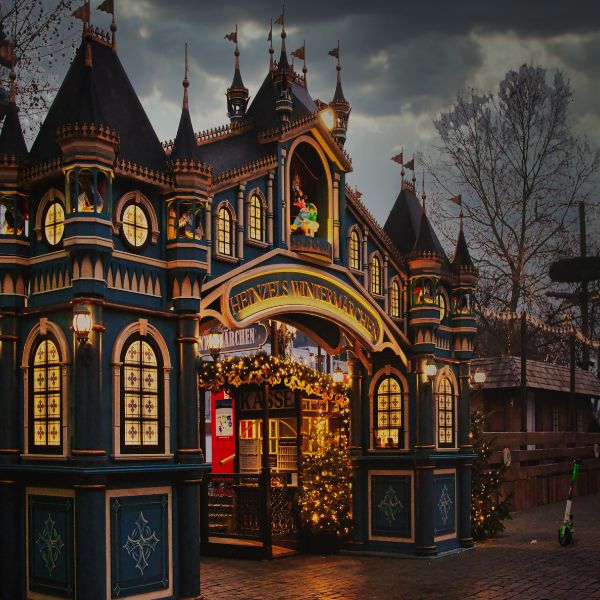 A true fairy tale market
A true fairy tale market3 - Weihnachtsmarkt im Stadtgarten (The Christmas Market in the Stadtgarten)
The Weihnachtsmarkt im Stadtgarten is less extravagant than the previous two, but popular for its relaxed and local atmosphere.
Nestled among the trees in the Belgian Quarter, the city of Cologne feels miles away.
There are more than 80 stalls, which change weekly, offering unique handmade goods and a diverse culinary experience, and of course, more mulled wine.
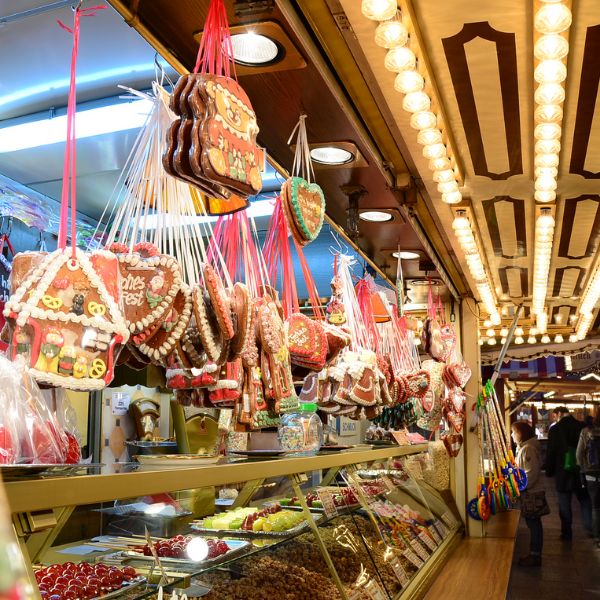 Feeling peckish?
Feeling peckish?Final Thoughts
Every city, town, and village has something unique to offer. Presenting itself as a historical cathedral city with a vibrant and welcoming atmosphere, things to do in Cologne are plentiful as they are varied. Here you will find a variety of experiences and local treats unavailable elsewhere, like a cultural all-you-can-eat buffet.

